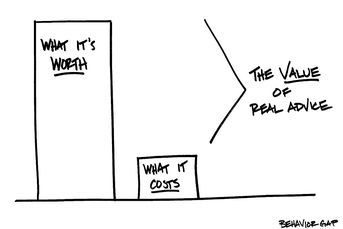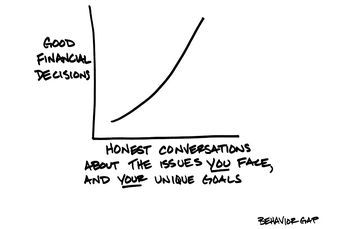How advisers can effectively talk about risk with clients
We need to make it clear that there's no such thing as zero risk.
Risk remains one of the most challenging topics for real financial advisers. Because when we say “risk,” our definition rarely matches what our clients think. But it’s so important that we learn to talk about risk effectively.
We have a lot of work to do on this issue, but today, I want to focus on one narrow point.
Let’s assume that you’ve met with a client and, after listening closely and asking a lot of questions, you have a diagnosis in mind, and you’re prepared to prescribe a specific solution around the investment strategy. I know there’s more nuance to this discussion, but to keep things simple, as part of your prescription, you’ll propose a split between equities and fixed income.
Now, when clients hear you want them to invest in equities, some will say, “Wait, I want to take as little risk as possible or, even better, no risk.” At this point, it’s helpful to take a step back.
If you feel like being direct, you can say, “Tell me which risk are you talking about?”
If you feel like being less direct, you can say, “That’s a good point. Let’s talk about different types of risk.”
In both instances, we need to make it clear that there’s no such thing as zero risk. But it’s amazing how often people don’t understand this reality until we walk them through it. No matter the choice, people are just trading off one risk for a different risk.
Asking the question helps you outline the risks, for example, of putting all one’s money in “non-risky” assets. Things like inflation or outliving your money are both real risks for any investor relying on only fixed-income investments.
On the flip side, investors face the risk of volatility in the stock market and the possibility it will go down and never recover. So where does that leave us?
We want clients to think about risk in context, and to do that, we want them to consider the trade-offs between different risks. And because you’ve listened and learned what matters most to them, you’re in a position to help them understand the trade-offs between different allocations. Only you can help them answer the question, “Which risk makes the most sense?”
I’d love to know if you have this kind of discussion with clients. How did they respond? Send me an email.
Carl Richards is a certified financial planner and director of investor education for the BAM Alliance. He’s also the author of the weekly “Sketch Guy” column at The New York Times. He published his second book, “The One-Page Financial Plan: A Simple Way to Be Smart About Your Money” (Portfolio), last year. You can email Carl here, and learn more about him and his work at BehaviorGap.com.
Learn more about reprints and licensing for this article.







